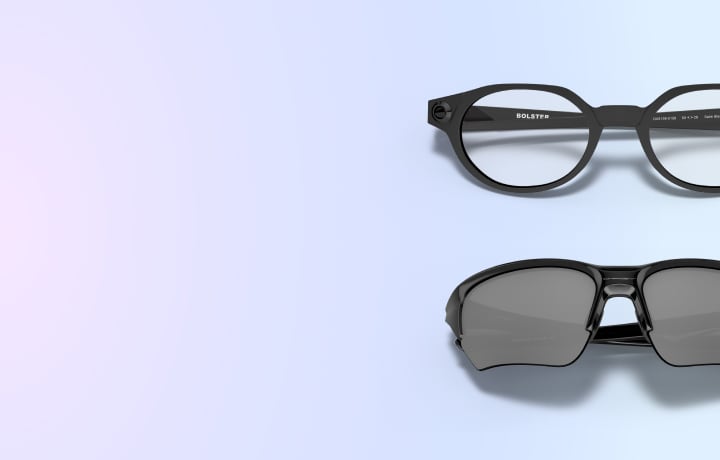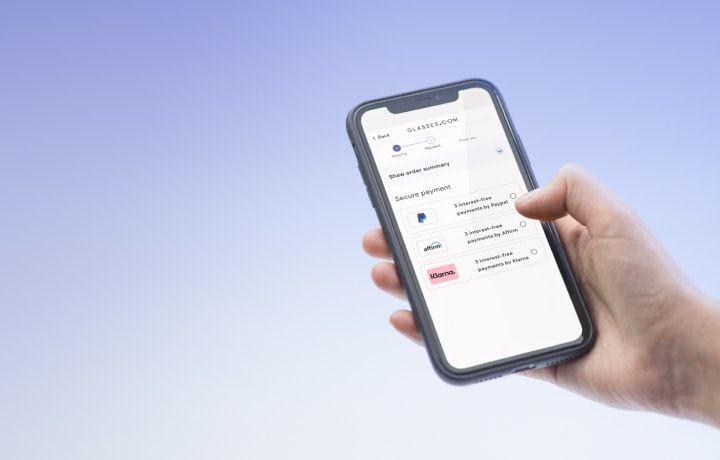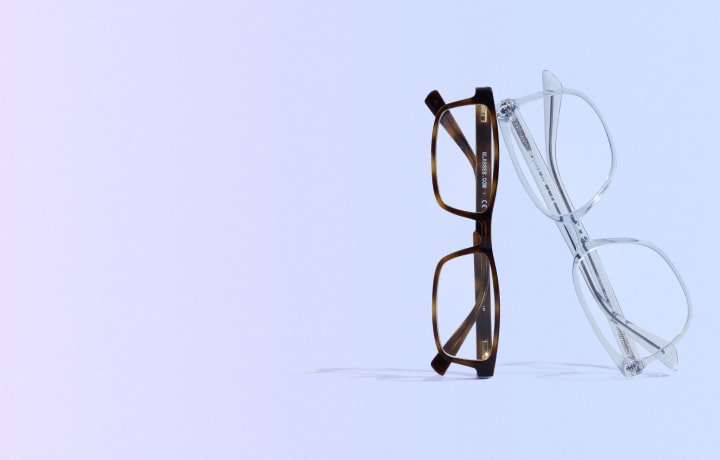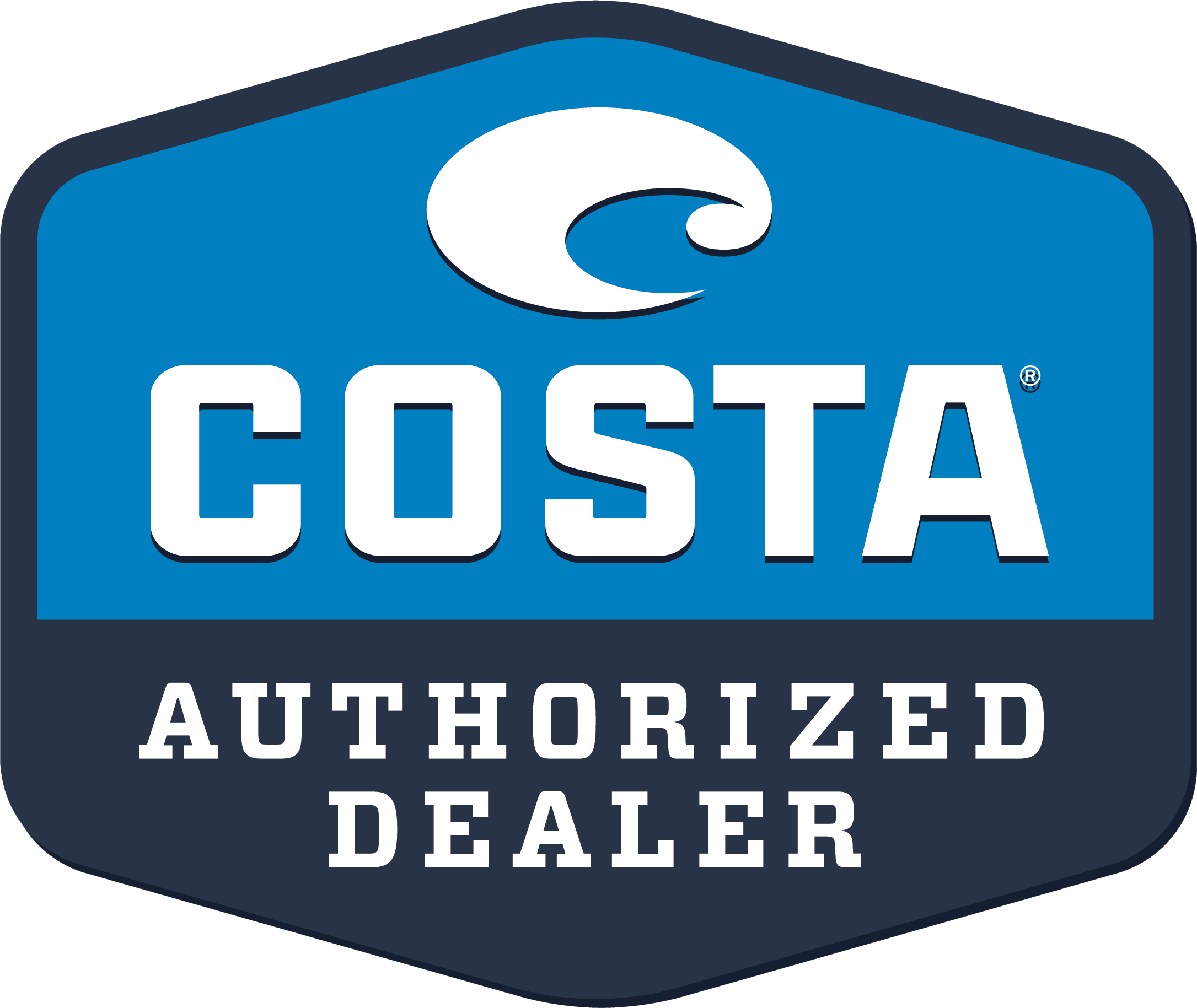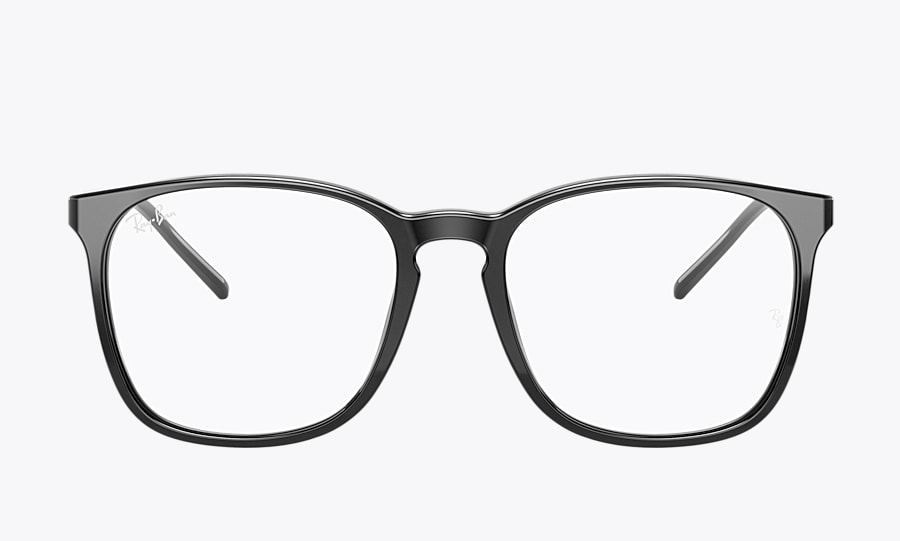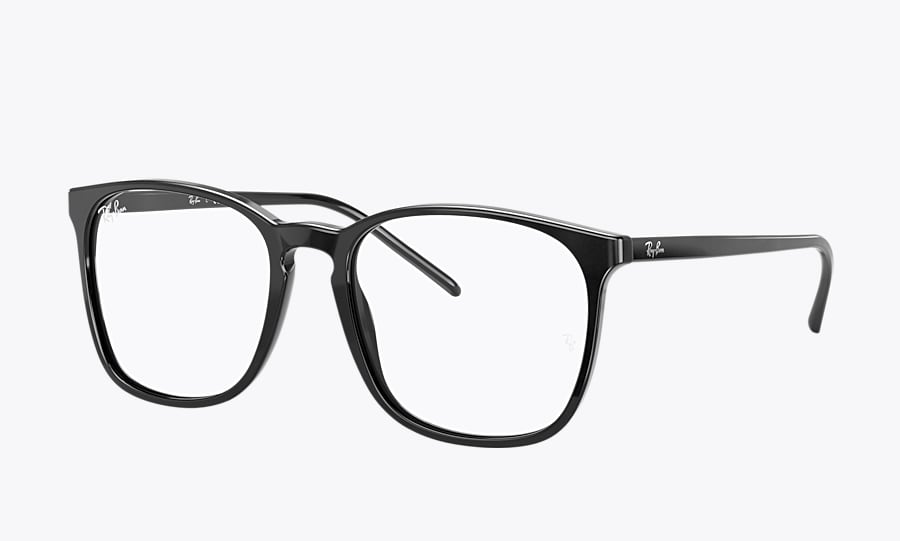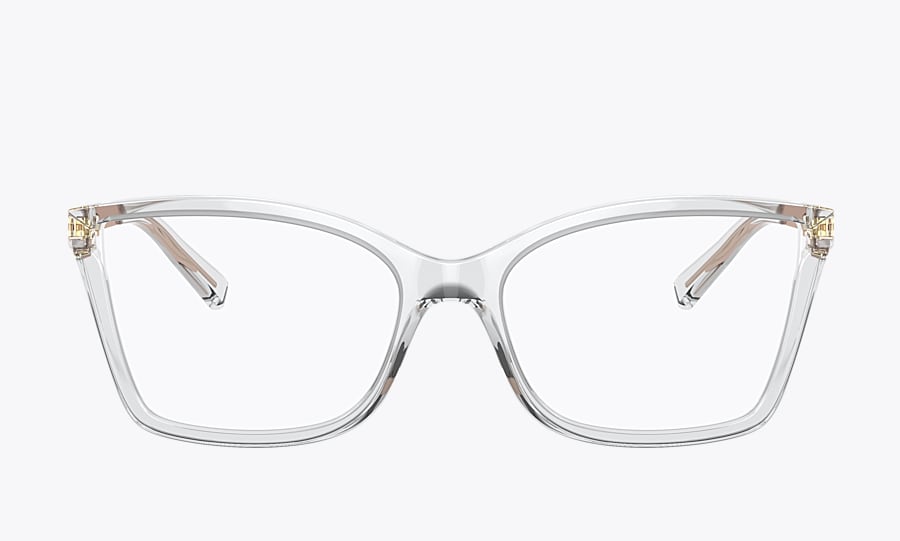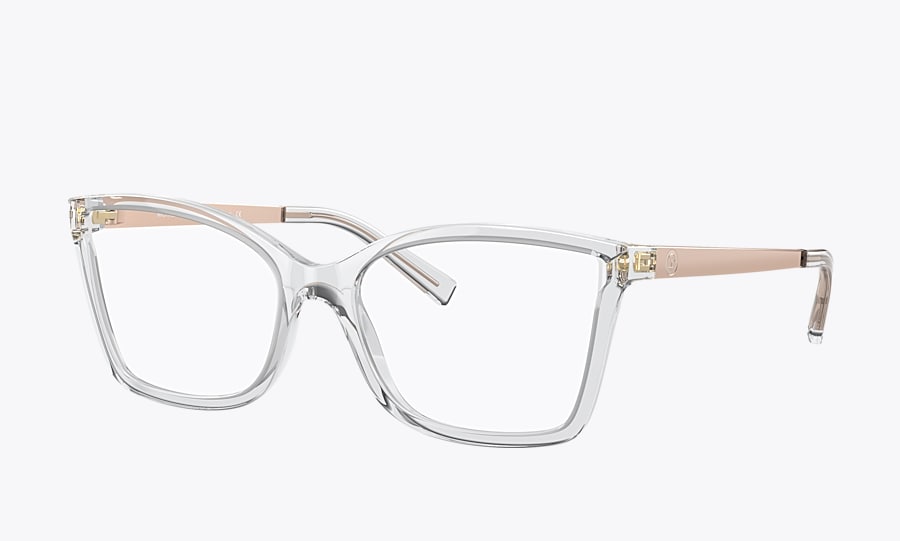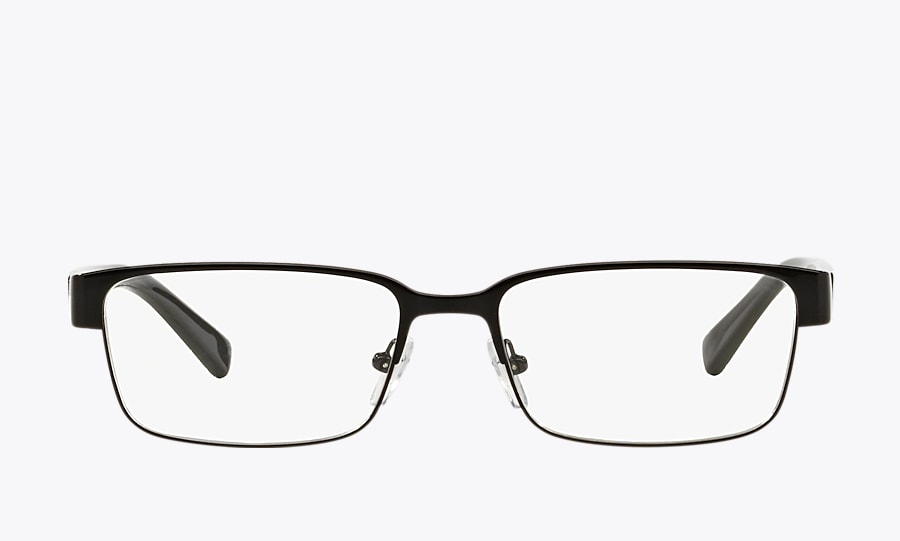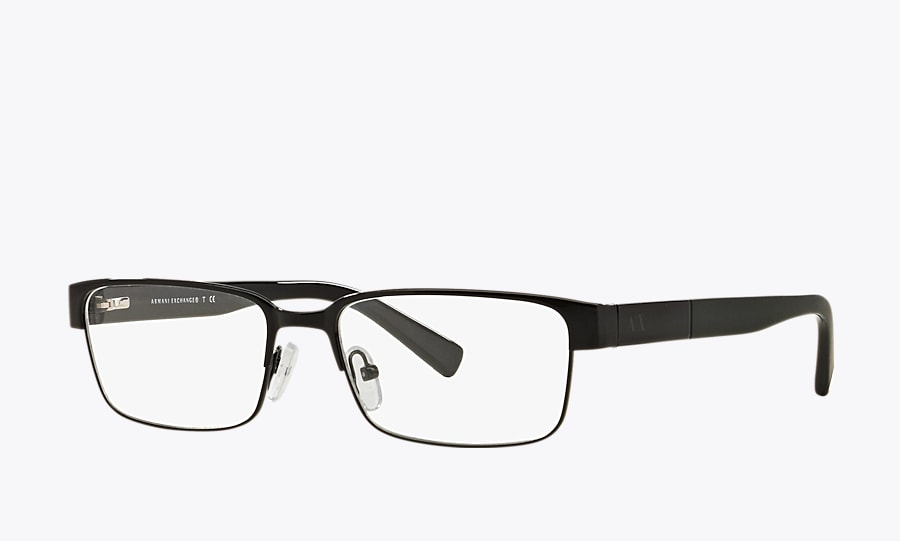
Why You Need Reading Glasses
As you age, your vision changes. And once you turn 40, you may notice that it’s harder to focus on close-up objects. You may need to hold things with small print farther away to read them. This age-related change in vision is called presbyopia and it’s a normal part of getting older.
Presbyopia usually affects adults beginning in their 40s, and it’s one of the main reasons why people — even those who have had otherwise perfect vision — eventually need reading glasses. While everyone’s vision is different, the general rule is that you’ll need lower-power reading glasses in your 40s and higher-power (stronger) reading glasses as you get older.
How Reading Glasses Work (They Aren't Just Magnifying Glasses!)
If your eyes feel tired more quickly when reading, or if you get headaches when reading or looking at a computer screen for a long time, you may need reading glasses, also called readers. You may be surprised to learn that while readers do make it easier to focus, it’s not only because they magnify small print.
It’s easier to see when wearing reading glasses because they provide the correction needed to help you see close objects clearly. The focusing strength of eyeglass lenses is measured in units called diopters. The diopter indicates the optical power of the lens. This refers to how close an object needs to be from your eyes for you to see it clearly when you’re looking through the center of the lens.
All About Diopters: Reading Glasses Strength
If you don't already wear prescription glasses to correct a vision problem, you can try over-the-counter reading glasses. When you’re looking for reading glasses, you’ll see that the magnification is written in diopters with a plus sign (+), a number and a decimal.
Try on several pairs with different strengths to find what works for you. If two pairs are close, pick the one with the lower strength. If the lenses you pick are too strong for your eyes, they may cause eye strain and headaches, and could make your vision worse faster.
There is no “average” power of readers, but many people use reading glasses between +0.75 and +2.50 diopters in strength. However, as you age and the natural lenses of your eyes continue to change, you’ll need higher-power reading glasses so you can continue to see clearly up close.
Below are guidelines about what strength reading glasses may work for you based on your age:
- Ages 40 to 49: +0.75 to +1.50 diopters
- Ages 50 to 59: +1.50 to +2.25 diopters
- Ages 61 and up: +2.25 to +2.75 diopters
You may want to get a few pairs of readers with different powers so you can see clearly and comfortably while doing different things, such as reading or working on a computer.
If you already wear reading glasses and notice they’re not working as well as when you first got them, it might be time for a pair with stronger power.
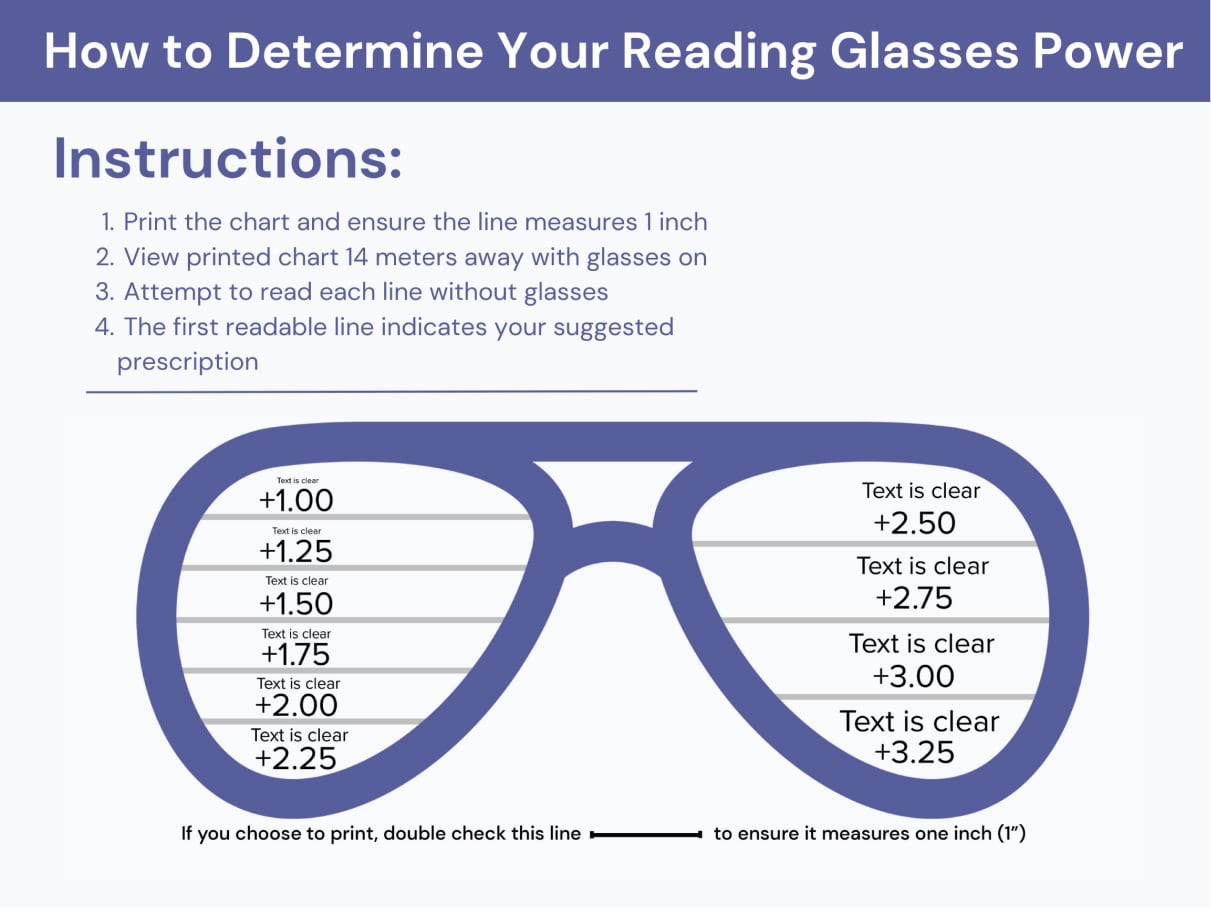
Using a Reading Glasses Strength Chart
When you’re choosing reading glasses, it’s a good idea to have something to read while trying on different pairs to make sure you get the best pair for your needs. You can print this reading chart and take it with you. Here’s how to use it:
- After you print the chart, hold it 14 inches away from your face.
- If you already have glasses or contact lenses, take them off or out.
- Cover one eye and read the chart from top to bottom and left to right. The smallest text is at the top left, so you may need to jump around before you find a line you can read clearly.
- Repeat with the other eye.
- When you can read a line clearly, make a note of the diopter, which is the number at the end of each line.
- Try on a pair of reading glasses with the same diopter number as you matched with on the chart.
Trying on readers at a store and using a reading glasses chart can help you select a pair that works for you. The best way to ensure you have glasses with the reading strength you need is by getting an eye exam from your eye doctor.
When You Need More than Just Reading Glasses
If you already wear glasses when you start to experience presbyopia, over-the-counter reading glasses may not work for you. You may be better suited to prescription reading glasses or glasses with progressive lenses. With both of these options, your eye doctor takes your distance correction into account (something that isn’t possible with over-the-counter readers).
Make an appointment with your eye doctor to discuss your options and get an updated vision prescription after a comprehensive eye exam.









